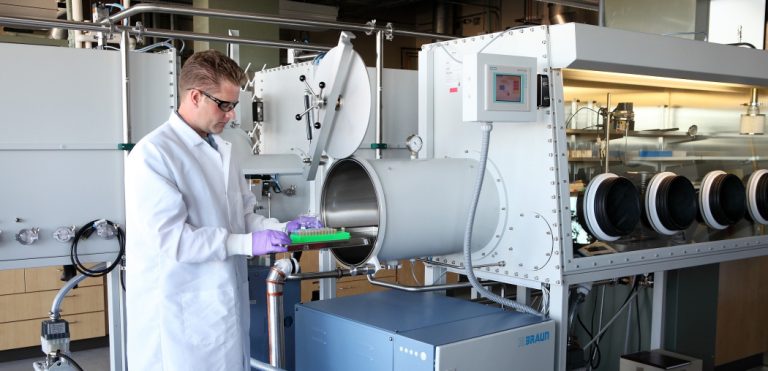Idaho Falls Colleges Keep Pipeline of Talent Flowing to Region’s Workforce
Schools strengthen workforce, enhance quality of life.

Economic developers and relocation experts know that a skilled workforce is the key to growth. With nearly a half dozen higher education options, the Idaho Falls region earns high marks for workforce development.
Growing Enrollment at CSI – Idaho Falls
The College of Southern Idaho operates a satellite campus at the Idaho Falls Center and offers students associate degree programs in business, liberal arts and STEM. Enrollment at the Center has more than doubled every year, growing from 25 students in 2014 to 200 students in 2016.
“Making higher education more accessible through CSI means putting better employees out into the workforce because they’re more educated,” says Josh Sakelaris, director of CSI Idaho Falls. “When people are better educated, they earn more and have a better quality of life.”
EITC’s Real-World Response
EITC currently offers more than 40 associate degree and certificate programs in three divisions – business and office technology, health professions, and trades and industry. The college also provides occupational upgrade training and customized training to businesses and industry throughout the region. More than 12,000 students take noncredit classes in a combination of short-term training, adult basic education and community education courses each year.
“EITC offers a real-world, hands-on approach to education that is critical for success in today’s and tomorrow’s marketplace. EITC is all about helping individuals create better lives for themselves,” says Todd Wightman, director of college relations and marketing for EITC. “Whether that means helping students who are the first one in their family to ever go to college or strengthening the regional economy by providing customized training programs and skilled entry-level workers for new and existing businesses, the college fills a unique role.”
Wightman says the college’s course offerings reflect the workforce needs of the business community. Health care programs, for example, continue to be in high demand as baby boomers retire from medical professions and begin to require more health care themselves. He says the newest and most popular program is machine tool technology, which prepares students to enter the high-paying advanced manufacturing industry and operate computer controlled machine tools, robots and 3-D printing machines.
“Changing lives is our college mantra. The college is here to help individuals transition into high-paying and rewarding jobs that will help our great community be a better place to live and rear their families,” Wightman says. “Well-educated, well-trained workers tend to produce more and earn more money, benefiting themselves, their families and the regional economy. The college helps to make the Idaho Falls region a vibrant community and a better life.”
Although EITC offers students a comprehensive technical education, the need for a community college in Idaho Falls that offers both technical and general education courses has public and private organizations working toward converting EITC into a full-fledged community college. A Community College Citizen Study Panel was established by Idaho Falls Mayor Rebecca Casper, Ammon Mayor Dana Kirkham and Bonneville County Commissioner Dave Radford to ascertain the possibility of a community college. If the panel’s report concludes that a community college is viable, a countywide vote will take place in 2017 to establish a community college taxing district in Bonneville County.
“Idaho has community colleges in the north, south and west, but not in eastern Idaho. Many high school students are not going on to college or attend college in Utah, which is 150 miles or so to the south,” Wightman says. “Advocates for the community college feel it is necessary to provide affordable options for people in eastern Idaho. The cost of a local community college is half the cost of a university. EITC is a wonderful technical college, but it provides only technical credits used toward a job. A community college would be able to provide general education credits that could be transferred to a four-year college.”
Collegiate Collaboration
Currently, the area is served by Utah-based Stevens-Henager College, Brigham Young University-Idaho in Rexburg and University Place, a higher education cooperative offering a selection of undergraduate and graduate degree programs from the University of Idaho and Idaho State University.
Two of University Place’s fastest-growing programs are biology (Idaho State University is the state’s leading institution) and nuclear science engineering, which ISU/University Place Provost Lyle Castle says is directly related to the campus being across the parking lot from the Idaho National Laboratory headquarters.
“There’s a lot of synergy with the lab in offering engineering programs, which help the Idaho National Laboratory. We have cooperative programs with BYU-Idaho, where they can earn a bachelor’s degree from BYU-Idaho, and a master’s degree from ISU,” Castle says. “In the 21st century, education comes to where people live. That’s just a reality of the higher education market. If we’re going to educate a much larger percentage of our population with college degrees, that’s the model that has to take place.”
Well-educated, well-trained workers tend to produce more and earn more money, benefiting themselves, their families, and the regional economy.
